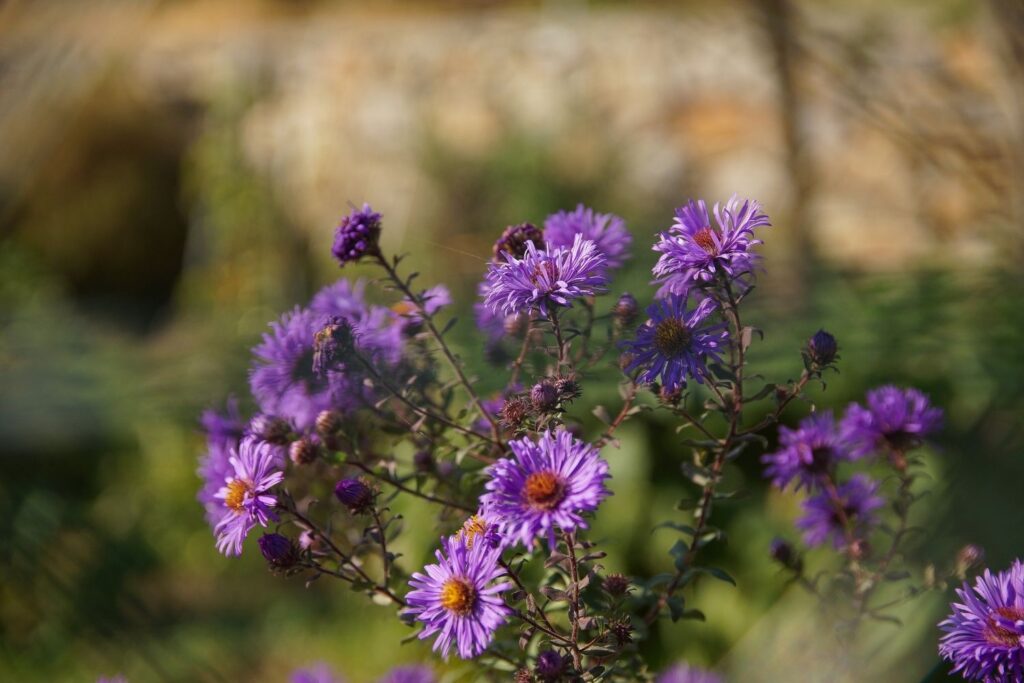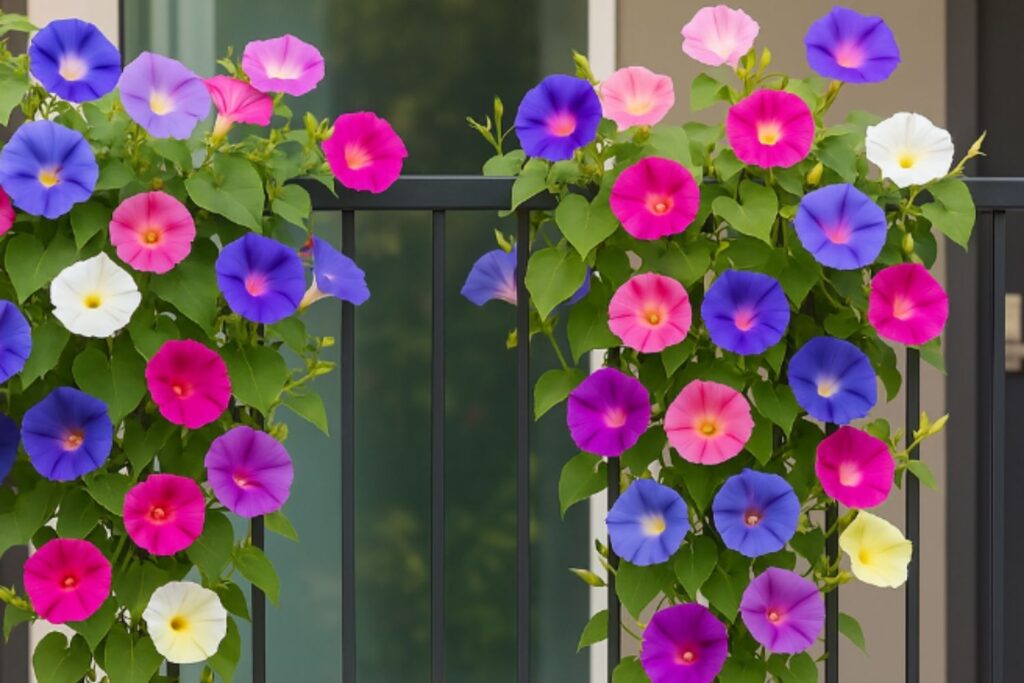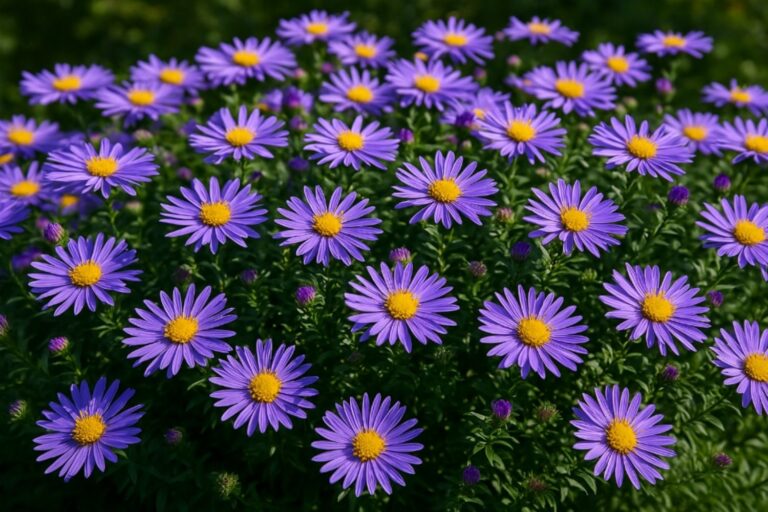September doesn’t shout—it lingers. It’s the in-between month, where summer’s edge softens and fall starts to pull focus. It’s thoughtful. A little nostalgic. And its flowers? Just as layered.
The September birth flowers, aster and morning glory, might seem delicate, but they’re anything but forgettable. Asters bloom late, holding their ground as most of the garden fades—symbols of strength, wisdom, and loyalty. Morning glories? They open with the sunrise, bold and bright, then vanish by afternoon. A quiet reminder that some moments are worth waking up for.
Two very different blooms, both rooted in meaning. Just like the people born this month.
What Are Birth Flowers?
Long before birthdays were about surprise parties and perfectly wrapped gifts, people turned to nature to mark the occasion. The tradition of birth month flowers began with the belief that each month carried its own bloom—one that mirrored the mood of the season and the character of those born within it.
Over time, this idea evolved into something more personal. Flowers of the month became a way to express feelings, mark milestones, and give meaning to birthdays beyond the usual card and candle routine. Gifting someone their birth flower wasn’t just a nice gesture—it was a nod to who they are and when they arrived.
At Ode à la Rose, we honor this tradition with our signature flowers, thoughtfully arranged to reflect the personality and symbolism behind each month. Whether it’s the bold presence of gladiolus in August or the reflective charm of September’s aster, we believe flowers can say what words sometimes can’t.
A birth flower isn’t just seasonal—it’s sentimental, symbolic, and surprisingly spot-on.
September Birth Flower: Aster
“A flower does not use words to announce its arrival to the world; it just blooms.”
— Matshona Dhliwayo
The aster is a quiet force. Star-shaped and steady, it doesn’t compete with the flashier blooms of summer—it waits until the noise fades and then makes its entrance. Blooming through late summer into fall, asters have long symbolized wisdom, patience, and enduring love. It’s a flower that shows up late but stays long, bringing color and calm when the rest of the garden is winding down.
As one of the September birth flowers, the aster reflects the steady, thoughtful energy of the month it represents: grounded, intentional, and just a little bit wild around the edges.
Aster: History and Symbolism
Asters have deep roots in myth and medicine. In Greek mythology, the flower is tied to the goddess Astraea, who looked down from the heavens and wept when she saw the Earth dark and starless. Her tears fell and turned into asters—stars that bloom on the ground.
In ancient times, asters were burned as incense to ward off serpents and negative energy. They were considered sacred in some Roman ceremonies and, by the Middle Ages, had found their way into folk medicine for everything from coughs, getting well and boosting immunity, to emotional healing.
In the Victorian language of flowers, asters spoke of elegance, deep affection, and a love that isn’t loud but unwavering. Today, they’re still tied to themes of loyalty, grace under pressure, and emotional depth—perfectly in step with September’s introspective spirit.

Aster: Colors and Their Meanings
What’s striking about asters isn’t just their shape—it’s their palette. Their shades aren’t sugary or overly bright. They’re grounded, slightly dusky, and full of personality:
- Purple aster – Wisdom and dignity, the classic aster hue
- Blue aster – Tranquility and introspection, often tied to emotional balance
- Pink aster – Affection and gentle admiration, especially in close relationships
- White aster – Purity, trust, and beginnings rooted in clarity
Color with asters isn’t just decoration—it’s mood, message, and presence, all wrapped in petals.
Aster: Growing and Caring
Asters are perennials, meaning they come back year after year, stronger with time. They bloom late in the season, which makes them especially valuable for pollinators like bees and butterflies when other food sources are fading.
They’re also surprisingly easy to manage, even for first-time gardeners:
- Light: Full sun is best, but they’ll tolerate partial shade.
- Soil: Well-drained, slightly acidic to neutral soil. Avoid waterlogged areas.
- Watering: Keep soil consistently moist early in the season, then taper off.
- Maintenance: Deadhead spent blooms to extend flowering. Divide clumps every few years to prevent overcrowding.
- Bonus: Many aster varieties are deer resistant, a gift if your yard doubles as a buffet.
With their late bloom time and lasting impact, asters are a perfect metaphor for people who don’t need to be first, just unforgettable.
September Birth Flower: Morning Glory
“Lose an hour in the morning, and you will spend all day looking for it.”
— Richard Whately
If the aster is steady and enduring, the morning glory is its opposite—fleeting, bold, and bound by the clock. This vine doesn’t wait. It blooms early, before the heat rises, and by midday, its flowers have curled shut. But for those few bright hours? It’s nothing short of magical.
As a September birth flower, the morning glory speaks to the beauty of brief, meaningful moments. It reminds us that not everything has to last to matter—some things are meant to be seen, felt, and remembered before they fade.
Morning Glory: History and Symbolism
Morning glories have long symbolized renewal, awakening, and affection that comes and goes. In Japan, where they’ve been cultivated for over a thousand years, they’re called asagao, meaning “morning face.” There, they’re celebrated for their impermanence—an ideal tied to the Japanese aesthetic of mono no aware, or the gentle sadness of things passing.
In Victorian England, morning glories were symbols of unrequited love or the acceptance of love lost. But not in a tragic way—more in the sense that some emotions, like flowers, are meant to bloom and be let go.
Their tendency to climb and reach skyward also links them to ambition and personal growth—a daily rising to meet the light, even if only briefly.

Morning Glory: Unique Characteristics
Morning glories are fast-growing vines with soft, trumpet-shaped flowers. Their bloom schedule is unique: each flower opens with the sun and closes by the afternoon. You don’t get second chances with these blooms—they teach you to pay attention now, not later.
Their colors are rich but never overdone: deep blues, bright purples, delicate pinks, and clean whites. Some varieties even have star-shaped patterns in the throat of the bloom—a little celestial nod to their cousin, the aster.
They’re climbers by nature and thrive on trellises, fences, or anywhere they can twist upward. And while they look delicate, their vines are tenacious, often returning year after year through self-seeding.
Morning Glory: Growing and Caring
These flowers love the sun and don’t need much fuss to thrive. But timing and placement matter—get them off to a good start, and they’ll do the rest.
- Planting: Sow seeds directly outdoors in spring. Soak them overnight beforehand to speed up germination.
- Light: Full sun is non-negotiable. Without it, the blooms stay shut.
- Soil: Well-drained soil is key. Morning glories don’t mind poor soil, as long as it’s not soggy.
- Watering: Moderate. Let the soil dry slightly between waterings.
- Support: Provide a fence, trellis, or even string—they’ll find a way up.
- Bonus: Once established, they’ll likely reseed themselves and return without help.
Morning glories are the kind of flower that shows up early, shines bright, and doesn’t need a long stay to make an impact. They’re a daily reminder that not all beauty is meant to last—some is meant to be noticed, and then let go.
How to Use September Birth Flowers
September isn’t flashy—it’s subtle. It’s a month of transition, reflection, and everything softening around the edges. And its birth flowers, aster and morning glory, follow suit. They’re not the stars of summer or the drama of winter—they’re the calm in between. Here’s how to bring their quiet charm into everyday life:
1. In Bouquets and Arrangements
- Mix asters with seasonal textures like eucalyptus, seed pods, or dried grasses for a cozy, early fall bouquet. Add in a few dahlias or dusty pink roses to elevate the look without overpowering it.
- Pair asters with herbs—think thyme, mint, or rosemary—to create a wild garden feel. It smells good and feels like something straight from a cottage garden.
- Use morning glories where they naturally thrive—weave them into living arrangements like archways, fences, or balcony trellises. Their vines add movement and their short-lived blooms create quiet little moments of surprise.
2. As Gifts
- Give asters as a thank-you to someone who’s been steady through a season of change. Their meaning—loyalty and wisdom—lands well without feeling overly sentimental.
- Gift morning glories for new beginnings—a baby, a new job, a clean slate. They bloom and fade fast, making them perfect metaphors for moments that matter even if they don’t last forever.
- Surprise someone “just because.” A bundle of asters wrapped in brown paper or a trailing vine of morning glory in a simple pot? That’s a small gesture that feels deeply personal.
- Mark a September birthday with a bouquet that says more than “Happy Birthday”—something that matches the mood of the month: calm, thoughtful, and full of quiet joy.
3. In Home Decor
- Place asters in low, wide vases on a dining table or entryway. Think simple: neutral ceramics, linen table runners, candlelight. Let the texture and star-shaped blooms do the talking.
- Use morning glories to decorate a window or balcony. Let them climb a wire, a piece of twine, or a small trellis—they’ll bloom early in the day, offering a gentle nudge to slow down and notice.
- Make a minimal bedside arrangement: one or two aster stems in a glass bud vase, maybe with a bit of green. It’s not extravagant—but it is grounding.
- Create a soft seasonal centerpiece by mixing asters with dried flowers or seed heads from the garden. Something you don’t have to swap out daily, but that still shifts the energy of the room.

Fun Facts About September Birth Flowers
- Asters were once burned to ward off snakes. Ancient Greeks believed the scent of burning aster leaves kept serpents away. It wasn’t just a flower—it was garden protection with flair.
- The aster was sacred to the goddess Virgo. Fitting, since Virgo season covers most of September. In Greek mythology, the constellation Virgo is linked to Astraea, whose tears are said to have created the aster. A flower literally born from stardust and sorrow.
- Asters belong to the daisy family. Don’t let the starry shape fool you—they’re distant cousins of sunflowers, chamomile, and echinacea. It’s a family of healers, all known for resilience and usefulness.
- Morning glories open based on sunlight, not time. These flowers respond directly to light levels, meaning a cloudy morning might delay their bloom—or skip it altogether. They’re sensitive, but in the best way.
- Some morning glories have psychedelic roots. Certain species, like Ipomoea tricolor, were used in ancient Aztec rituals for their mind-altering seeds. Definitely not the kind you’d want in your teacup.
- Aster is the official flower of 20th wedding anniversaries. It symbolizes lasting love—loyal, quiet, and steady over time.
- Morning glories are fast climbers. Under the right conditions, they can grow up to 12 feet in a single season. Give them support, and they’ll take off—an overachiever among vines.
- Asters are late bloomers—in a good way. While most flowers bow out by September, asters lean into the chill and thrive in cooler temps, making them essential for end-of-season pollinators.
Together, aster and morning glory reflect the soul of September: introspective, layered, and rooted in quiet beauty. One stays late into the season, offering steady presence; the other greets each morning with delicate boldness, then lets go.
And if you’re looking to mark a birthday, a turning point, or simply send something with meaning, Ode à la Rose’s signature flowers are designed for just that—seasonal, thoughtful, and made to speak for you when words don’t quite cover it. September may whisper more than it shouts, but with flowers like these, it still leaves a lasting impression.





